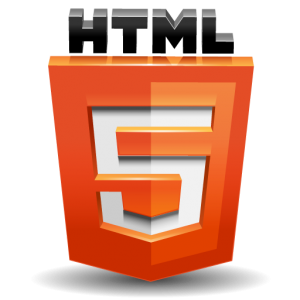Advantages of using HTML5, Disadvantages, PDF Tutorials
What is HTML5
This is the latest version of HTML. HTML as well is not a programming language, it is a markup language. The audience for this is any software programmers or any persons around the world. HTML-5-Tutorial.com is geared to those who want to edit and write HTML code by hand. Knowing how the nuts and bolts of a webpage fit and work together gives you the means to utilize HTML5’s full potential. Debugging and tweaking the code is easier and it greatly facilitates search engine optimization (SEO).
HTML5 stands for Hypertext Markup Language version 5. World Wide Web Consortium (W3C) published it in October 2014. It is the most recent version of the language or code that explains web pages. HTML5 was created so as to enable various characteristics that the present day websites need. It is simple to adopt as there are no major alterations to the programming version of HTML.
HTML5 is the new standard that is expected to take over the Web. Presently, there are three firms that oversee the description of HTML5, they are:
- Web Hypertext Application Technology Working Group (WHATWG). HTML5 specification was made and developed by WHATWG. The development makes for a working relationship with browser vendors as well as other interested parties.
- World Wide Web Consortium(W3C) takes care of producing HTML5 specification
- Internet Engineering Task Force(IETF) develops html5 webSocket known as API
HTML5 aims to bring sanity to web development issues by putting together regular practices, accepting tools from different web browsers. Simply put, HTML5 is an umbrella name for the next phase of web apps and how effectiveness will be broadened with better style (CSS), better mark-up (HTML) and better communication (JavaScript).
The following are the very popular browsers that are compatible with most of the HTML5 characteristics. It is important to note that not all of these browsers enable all the HTML5 characteristics.
- Google Chrome 10.0 and higher
- Firefox 4.0 and higher
- Internet Explorer 8.0 and higher
Characteristics of HTML5
Multimedia Enabled
HTML5 enables a browser to play video and audio files..
New HMTL5 Input Element Types
In HTML5 a few recently made input types have been included, Input types are useful in receiving the input in a desired format. Input tools are very important in data based web applications.
Canvas in HTML5
HTML5 is canvas areas enabled. Canvas is a rectangular area, which allows pixel level work such as a line, circle, box, performing graphics, etc.
Editable Contents in HTML5
This feature lets the end users edit the HTML control’s make up. This type of feature allows developers to build web pages that contain sections such as HTML editor, notes etc.

Advantages:
- Mutuality:Due to usability purpose, the website made by developers are becoming social everyday like facebook, twitter etc. Till now they have only the option to integrate it with the help of Flash or Silverlight, Flex or javascript like tools. But these consume so much time to develop and even the complexity of web application also increased. But now with the help of HTML5 it is possible to embed video and audio, high quality drawings, charts and animation and many other rich content without using any plugins and third party programmas as the functionality is built into the browser.
- Cleaner Markup or Improved Code:HTML 5 will enable web designers to use cleaner, neater code; we can remove most div tags and replace them with semantic HTML 5 elements.
- Consistency:As websites adopt the new HTML5 elements we will see more greater consistency in terms of the HTML used to code a web page on one site compared to another. This will make it more easier for designers and developers to immediately understand how a web page is structured.
- Fulfill the need of Web Application:Main focus of HTML5 is to make easier application with easy front-ends, drag and drop tools, discussion boards, wikis and other useful elements.
Disadvantage
- Lack of Cross- Browser Capability: This HTML may not be supportive to all browsers.
- May not be supportive to Legal Browsers. We all know that HTML5’s main commitment was to support and has compatibility with old browsers, but it is not completely supportive with the major browsers. It is also talented to only some extent like the legacy versions of the IE (Internet Explorers) are not supporting with HTML5.
- Restrictions to Graphics and Animations. With the help of Adobe Flash, we are able to develop rich graphics and animations, but when it comes to use HTML 5 as option, you are restricted up to some limit as it does not provide that much of flexibility as Flash. Therefore, you can find lots of developers, who are still opting for JavaScript and CSS to develop graphics and animation.